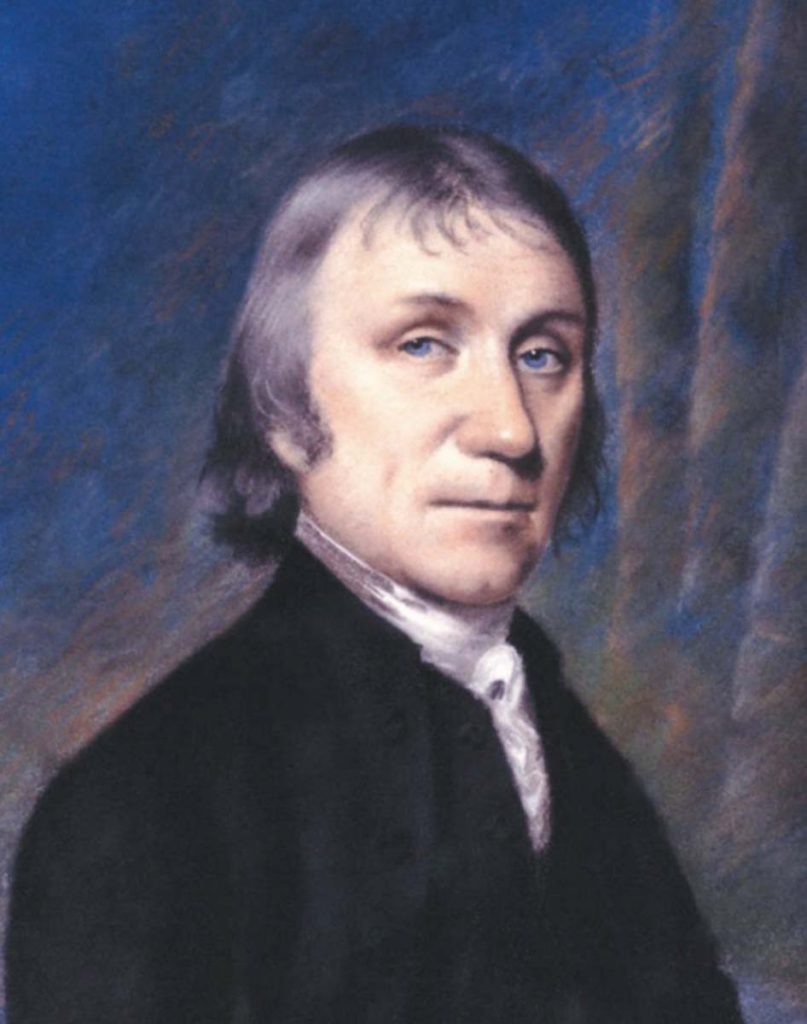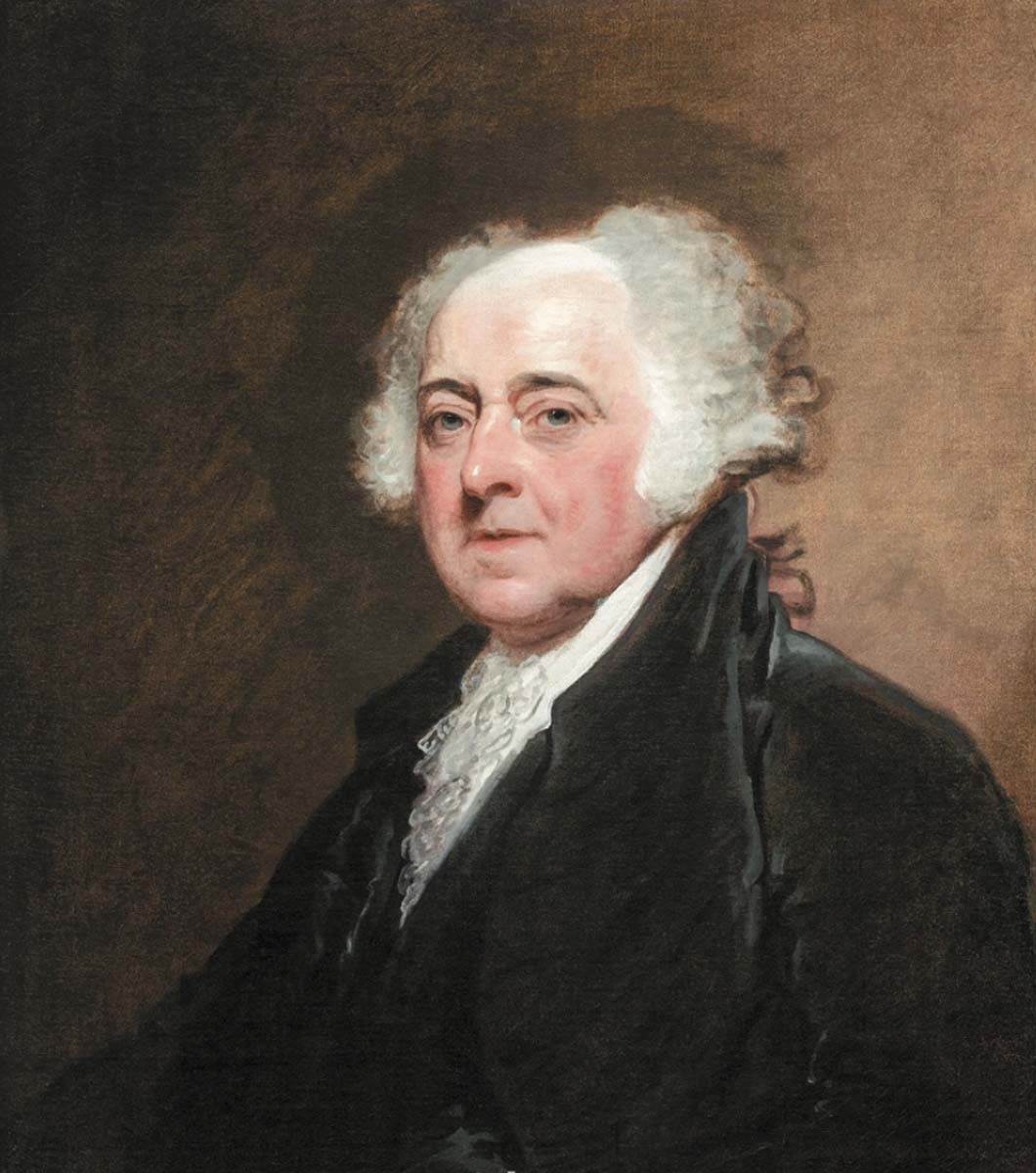America’s second president wrote, “Where is to be found Phylosophy more profound than in the Introduction to the [Hindu] Shasta?”
By Rutvij Holay, 16, California
The history of hindu influence in American dates back to the founding of our nation itself. By studying it, one can gain insight into the Western arguments against Hinduism at that time, which were very much the same arguments that surround Hinduism today.
To find this influence, all one must do is look at the letters of the Founding Fathers themselves. Most know these men—Jefferson, Washington, Adams, etc.—for their work in creating the United States. In addition, it’s moderately well known that Jefferson wanted religious liberty for non-Judeo-Christian faiths.
What is less known, however, is the profound respect John Adams, second president of the United States, had for Hinduism. Adams often engaged in the study of comparative theology, which is the idea of comparing various religions from the perspective of an outsider. Late in his life, long after his term as president, he began to study multiple non-Abrahamic religions, including Hinduism, and contrast them with Christianity.
In one such study, described in his letter to Thomas Jefferson on Christmas day in 1813, Adams noted similarities between Hinduism and Christianity. He praised the Shastras (which he spelled Shastas), noting that they emphasized how “It is enough that, day by day, and night by night, you adore his Power, his Wisdom and his Goodness, in his Works.” This line, the idea that Brahman is in everything and bhakti alone can be sufficient, was hailed by Adams to be the most profound philosophy he had heard, and one written in Sanskrit with the elegance of Plato.
Since many in those days read the Western classics in their original languages, one wonders how Adams felt about learning Sanskrit. He did ask, in the rather complex English used at the time, that “Missionarys [sic]would import and translate Sanskrit, and Persian Books, we might possibly learn something useful from them that we do not know which might somewhat abate our Bigotry.” It does seem that, though he knew the importance of learning the language, he did not know it himself.
This admiration and knowledge, however, becomes all the more impressive when placed in a wider context of a letter which was a rant Adams had gone on against the writings of one Joseph Priestley, a man whom he called “absurd, inconsistent, credulous and incomprehensible.”
Priestley, a devout Christian, was a renowned chemist who discovered carbonated water. He was also a part-time comparative theologian who focused on non-Abrahamic religions. He wrote the Comparison of the Institutions of Moses, with those of the Hindoos and other ancient nations (bit.ly/PriestleyonHinduism) which was intended to prove the superiority of Christianity over Hinduism by using the Manusmirti to show that Hinduism was an oppressive religion with “the most tedious and ridiculous observances,” as Adams put it.
Adams disagreed vehemently with Priestley, claiming that he was too biased and “ought to have done impartial justice” to each religion. He cited the fact that Priestley praised Pythagoras and Greek culture, yet critiqued him on how he failed to mention Pythagoras’ travels to India.
Later on, Adams claimed that the ideas of “Pythagoras and Plato, their contempt of Matter, flesh and blood, their almost Adoration of Fire and Water, their Metempsicosis [sic, theory of reincarnation]” were not solely their own, but “So evidently derived from India.”
As to why he says this, it becomes clear once one looks at the ideas of Pythagoras and other Greek philosophers. These men prized fire, the Sun, water and many other elements of nature, to the point that they would salute the Sun every morning—a clear parallel with Sun salutations, or Surya Namaskar.
The Pythagorean diet was very strict. Not only were they vegetarians, they also were prohibited from eating certain foods such as eggs. While vegetarianism in and of itself may have been a coincidence, the banning of eggs, which are still considered nonvegetarian by most Indians, perhaps has a strong origin in India’s sattvic diet.
Another key parallel that he brings up is based on the Greek concept of metempsychosis, or reincarnation. There is a large possibility this concept was taken from India, and the fact Adams brings up that there is no doctrine which attributes its origin to a Greek, and that various Indian sadhus such as Dandamis, from the 4th century bce, were well known to the Greeks during their lifetime, makes it even more likely that this is the case. Not only does Adams attribute the ideas of the Greeks to India, but he also attributes the ideas of the Egyptians to Hinduism as well, given that they worshiped cows,—all of which is a striking difference to some modern academic claims, such as that Indic scripts have their linguistic foundation in Egyptian hieroglyphics.
Adams goes further and states the Christian concept of the Trinity, the commonly held idea that one God is split into the Father, Son and Holy Spirit, comes from the Hindu Trimurti of Brahma, Vishnu and Maheshvara. This idea, along with the general idea of “not one, but not multiple,” addressed by Shankaracharya, has been in Vedic thought for longer than Christianity has existed. Furthermore, seeing how the idea of the Trinity runs directly contradictory to Abrahamic monotheism, it makes sense that there may be a foreign origin to this conception.
Aside from these relatively minor issues, Adams disagreed with Priestley on the whole crux of his argument, pointing out that Priestley was comparing the Bible with Manusmriti. Adams knew that the Manusmriti was inaccurate and full of contradictions, due to which it was not representative of Hindu thought. Rather, he felt that before a just comparison could be made between Hinduism and other religions, Priestley ought to have learned about the Shastras, “which are more honourable to the original Hindo Religion than anything he has quoted,” before jumping to conclusions.
We don’t know exactly what Adams meant by Shastras, which are just one part of the texts of Hinduism. It is possible Adams assumed that Shastras was a word for all holy books (though he did separate the Vedas from the Shastras). But Adams’ point remains valid and is shared by many Hindu experts today. The Manusmriti was one of thousands of Hindu texts, no more well known than, say, the Nitisara of Kamandaki, until it was brought to prominence solely by the British, who wanted the easy way out when it came to crafting Hindu laws. That aside, the Manusmriti contains many contradictions and implausibilities—such as the position of women and the origins of various jatis—indicating it had no single author. The fact is, however, that the Manusmriti we are reading today, and the one that Priestley read centuries back, is very likely not the original version, and thus cannot accurately be used to judge Hindu culture. Having access to the exact Shastras which Adams read would enable us to gain an even fuller understanding of his works.
While we may never know which Shastras Adams read, his work is brilliant and relevant, especially today. Priestley’s legacy still lives on, though he and those who studied him have passed. Middle and high school history textbooks, such as McGraw Hill, still extensively cite the Manusmriti (though, to their credit, they cite the Gita and Ramayana as well). At times they also subtly push a Judeo-Christian narrative, for example stating that the Israelites did not worship “false idols.”
Adams’ legacy has not been forgotten, though this chapter of his life has been, even by Hindus. The beliefs he held, the criticisms he made, are still being made today. As I read through his letters, it felt as if I was talking today to members of the Hindu Education Foundation or the Hindu University of America. Both of these organizations not only understand the tenets of Hinduism well, but also criticize the leading academicians of our day for their lack of attributions to Hinduism for its contributions to the world, as well as for continued attacks based on Manusmriti. In Adams’ day, it was an amateur theologian such as Priestley. In our day, it’s dozens of academics, at many universities throughout the world who very much follow the same narrative Priestley espoused. In general, philosophers try to improve the arguments of those who preceded them; Christian scholars have just doubled down on those original arguments.
What the Hindu community forgets, however, is that if their responses have stayed the same, then we have decades of scholarship behind us to back up our counter arguments as well. Not just Adams, many other great men—such as Thoreau, who lived in Christian-majority nations that have never been too sympathetic towards the pagan Hindus—have been defending our way of life in academia long before we started.
Instead of desperately trying to reinvent the wheel and come up with new arguments to the same fixed attacks on caste, polytheism and idolatry, we should dedicate ourselves to understanding the works of our predecessors. This article has given a brief foray into Adams’ thought, yet far more remains to be found, amongst not only his works, but the works of other American greats such as Jefferson. From there, we will not only gain a greater understanding of the influence of Hinduism in this county, but also the arguments used to attack Hinduism then, and how they were countered, so we can more effectively defend Hinduism today.
Adams on Priestley


“Priestley ought to have told us, that pythagoras passed twenty Years, in his Travels in India, in Egypt, in Chaldea, perhaps in Sodom and Gomorrah, Tyre and Sydon. He ought to have told Us that in India he conversed with the Brahmans and read the Shasta [sic], 5,000 years old, written in the Language of the Sacred Sanscrists with the elegance and Sentiments of Plato. Where is to be found Theology more orthodox or Phylosophy more profound than in the Introduction to the Shasta? ‘God is one, creator of all, Universal Sphere, without beginning, without End. God governs all the Creation by a general Providence, resulting from his eternal designs. Search not the Essence and the nature of the Eternal, who is one; your research will be vain and presumptuous. It is enough that, day by day, and night by night, you adore his Power, his Wisdom and his Goodness, in his Works. The Eternal willed, in the fullness of time, to communicate of his Essence and of his Splendor, to Beings capable of perceiving it. They as yet existed not. The Eternal willed, and they were. He created Birma, Vitsnow, and Sib.’ These Doctrines, Sublime if ever there were any Sublime, Pythagoras learned in India and taught them to Zaleucus and his other disciples.”


Rutvij Holay of Irvine, California, an executive committee member of Americans for Equality PAC and a budding Hindu political activist who is presently working with his local school district and a textbook company to change how Hinduism is depicted in education. He can be reached at rutvij.holay@gmail.com.


